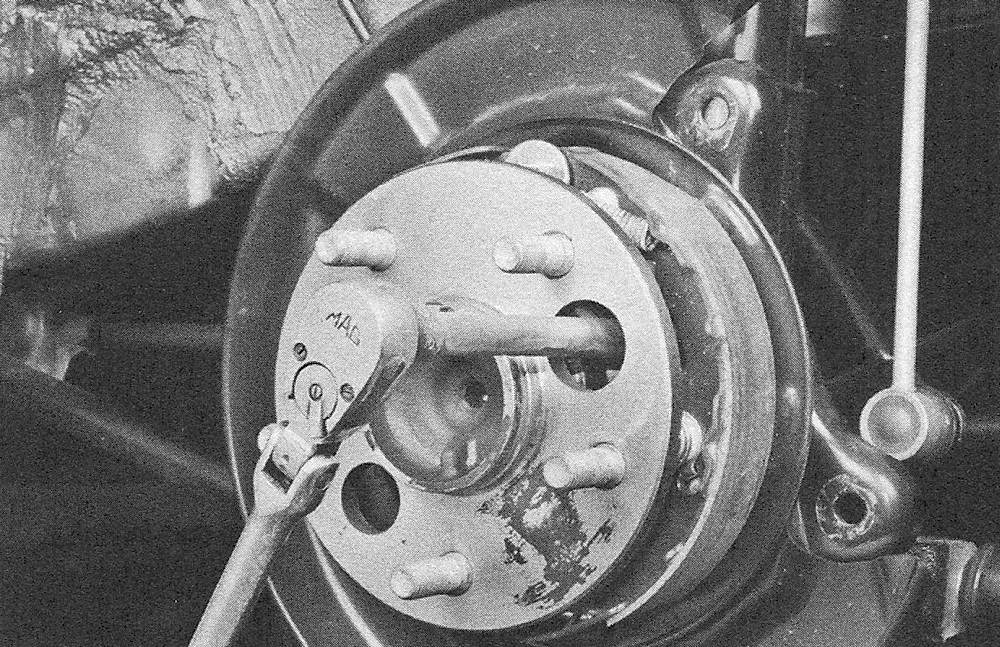Hub and bearing assembly (rear) — removal and installation
Warning: Dust created by the brake system is harmful to your health. Never blow it out with compressed air and don’t inhale any of it. Do not, under any circumstances, use petroleum-based solvents to clean brake parts. Use brake system cleaner only.
Note: The rear hub and bearing assembly is not serviceable. If found to be defective, it must be replaced as a unit.
Removal
1. Loosen the wheel lug nuts, raise the vehicle and support it securely on jack stands. Remove the wheel.
2. Remove the brake drum or disc from the hub (see Brakes). If equipped, disconnect the wheel speed sensor.
3. Remove the four hub-to-axle carrier bolts, accessible by turning the hub flange so that the large circular cutout exposes each bolt (see illustration).
13.3 To remove the four bolts that attach the hub and bearing assembly to the rear axle carrier, rotate the hub flange and align one of the holes in the flange with each of the bolts

4. Remove the hub and bearing assembly from its seat, maneuvering it out through the brake assembly.
5. Remove the old 0-ring from the hub seat and install a new one. Wheel bearing grease may be used to keep the 0-ring in place before installing the hub-and-bearing assembly.
Installation
6. Position the hub and bearing assembly on the axle carrier and align the holes in the backing plate. Install the bolts. A magnet is useful in guiding the bolts through the hub flange and into position. After all, four bolts have been installed, tighten them to the torque listed in this Chapter’s Specifications.
7. Install the brake drum, or disc and caliper, and the wheel. Lower the vehicle and tighten the lug nuts to the torque listed in the Tune-up and routine maintenance Specifications.